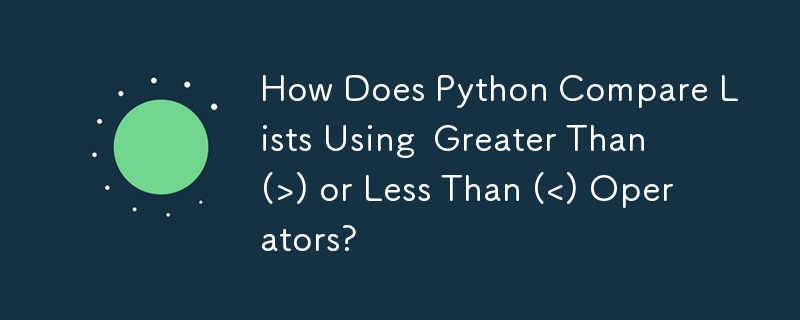
 ) or Less Than (
) or Less Than (
Comparing Lists vs Comparing List Elements
Directly comparing two lists using comparison operators (> or <) in Python may seem straightforward, but its semantics can lead to unexpected results. Unlike scalar value comparisons, list comparison is based on lexicographical ordering.
Here's how Python compares lists lexicographically:
This ordering means that if the first unmatching element in list_a is greater than its corresponding element in list_b, the expression a > b will evaluate to True.
For instance, consider the following code:
<code class="python">a = [3, 3, 3, 3] b = [4, 4, 4, 4] a > b # False b = [1, 1, 1, 1] a > b # False</code>
In the first example, b > a because the first unmatching elements (4 vs. 3) satisfy b > a. In the second example, both lists have equal elements, resulting in a > b and b > a both being False.
However, if the first unmatching elements differ in order, the outcome of the comparison favors the list with the first larger element. This is evident in the following examples:
<code class="python">a = [1, 1, 3, 1] b = [1, 3, 1, 1] a > b # False b > a # True a = [1, 3, 1, 1] b = [1, 1, 3, 3] a > b # True b > a # False</code>
Therefore, when using comparison operators on lists, it's important to be aware of lexicographical ordering. This ordering compares lists element-by-element until a difference is found or all elements are exhausted, and it favors the list with the first larger element.
The above is the detailed content of How Does Python Compare Lists Using Greater Than (>) or Less Than (<) Operators?. For more information, please follow other related articles on the PHP Chinese website!




